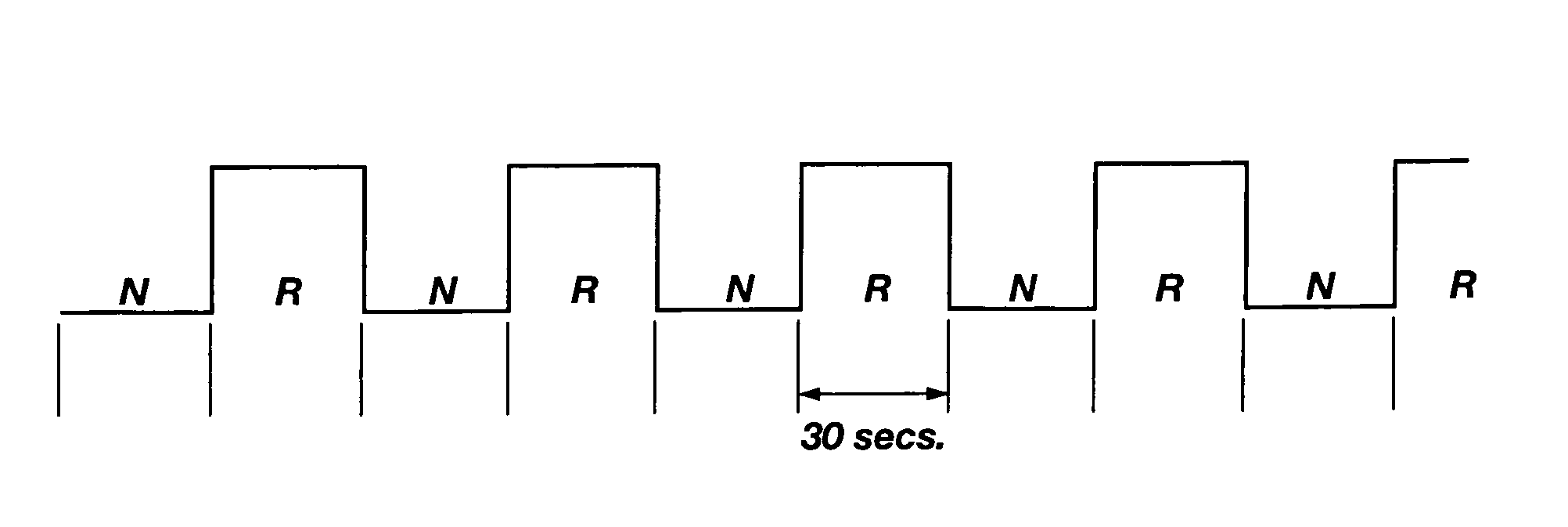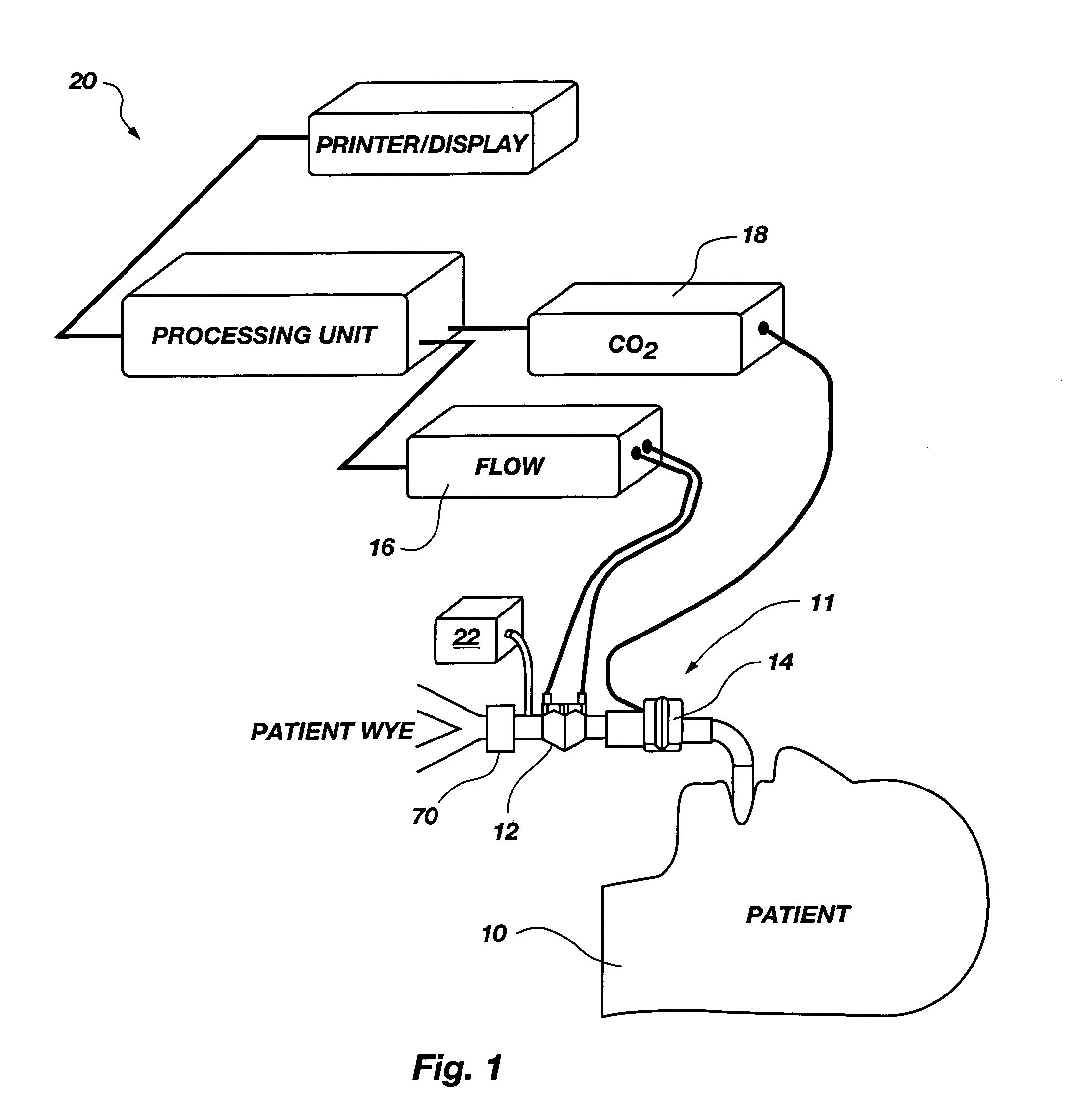Rebreathing methods including oscillating, substantially equal rebreathing and nonrebreathing periods
a rebreathing and non-rebreathing technology, applied in the field of rebreathing methods including oscillating, substantially equal rebreathing and non-rebreathing periods, can solve the problems of not collecting any data for analysis, not being able to harm patients, and being somewhat undesirabl
- Summary
- Abstract
- Description
- Claims
- Application Information
AI Technical Summary
Benefits of technology
Problems solved by technology
Method used
Image
Examples
Embodiment Construction
[0045]As is known in the art, due to carbon dioxide buffering and large storage volumes of carbon dioxide in the body, the CvCO2 of a patient changes very slowly relative to the rate at which the CaCO2 of the patient varies when a change in the effective ventilation of the patient occurs. The inability of a signal, such as the CvCO2 of a patient, to respond quickly to a change in effective ventilation is referred to as “damping” of the signal.
[0046]FIG. 9A illustrates an example of a conventional rebreathing technique in which R indicates the periods during which rebreathing is effected and N designates the nonrebreathing periods, in which normal ventilation may occur. Conventional wisdom has indicated that differential Fick techniques should be short enough to avoid inducing changes in the CvCO2 of a patient, but long enough to effect a substantial change in the CaCO2 of the patient. Notwithstanding this conventional wisdom, it has been discovered by the inventors herein that any c...
PUM
 Login to View More
Login to View More Abstract
Description
Claims
Application Information
 Login to View More
Login to View More - Generate Ideas
- Intellectual Property
- Life Sciences
- Materials
- Tech Scout
- Unparalleled Data Quality
- Higher Quality Content
- 60% Fewer Hallucinations
Browse by: Latest US Patents, China's latest patents, Technical Efficacy Thesaurus, Application Domain, Technology Topic, Popular Technical Reports.
© 2025 PatSnap. All rights reserved.Legal|Privacy policy|Modern Slavery Act Transparency Statement|Sitemap|About US| Contact US: help@patsnap.com



